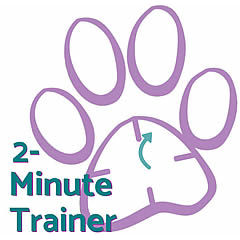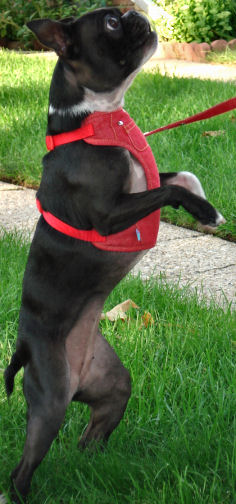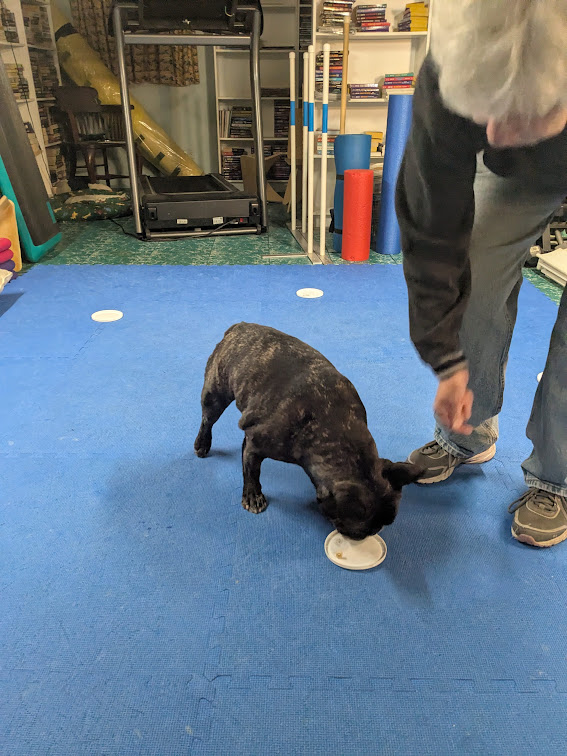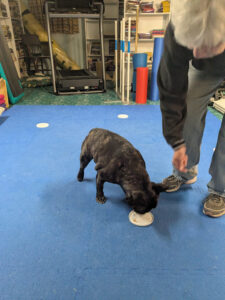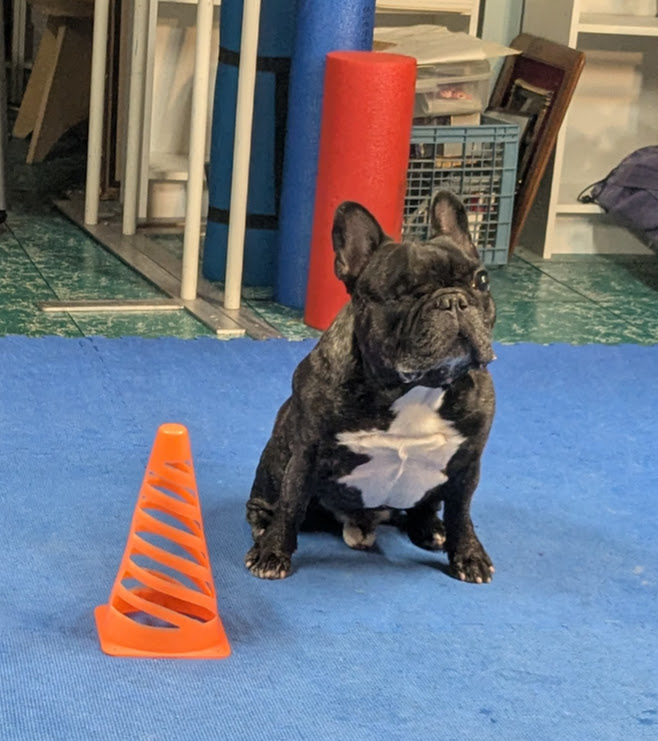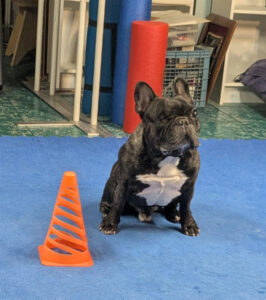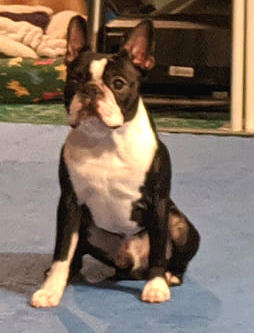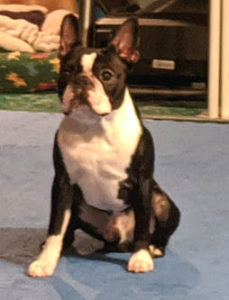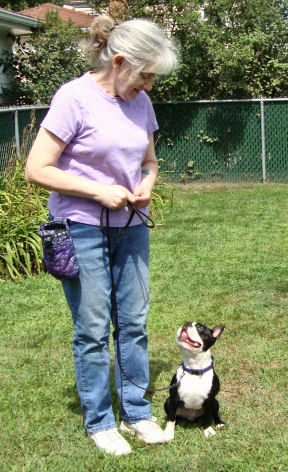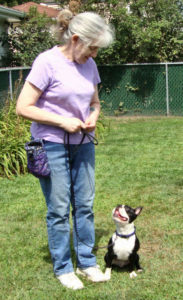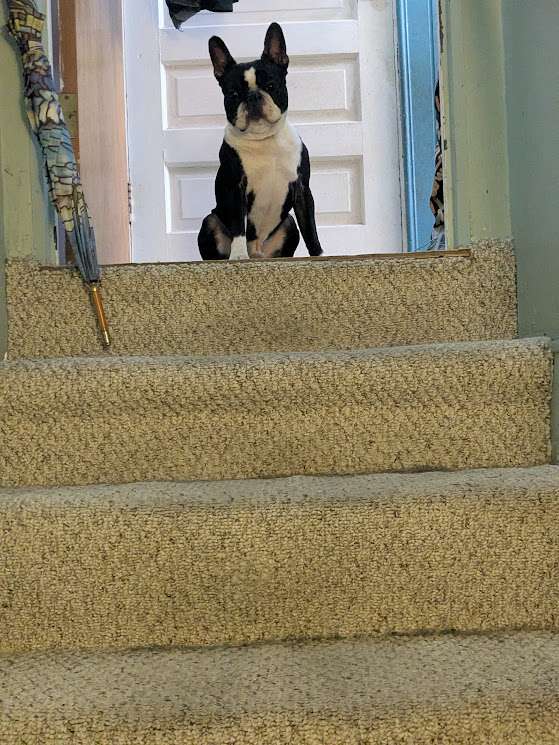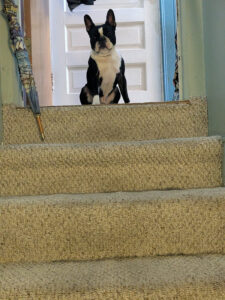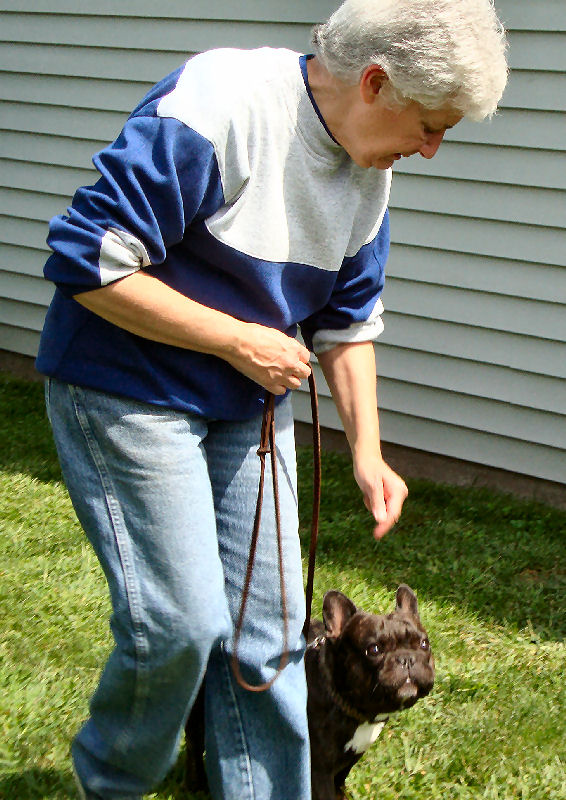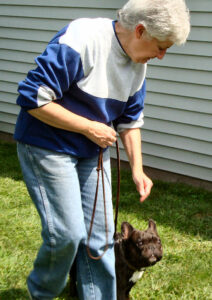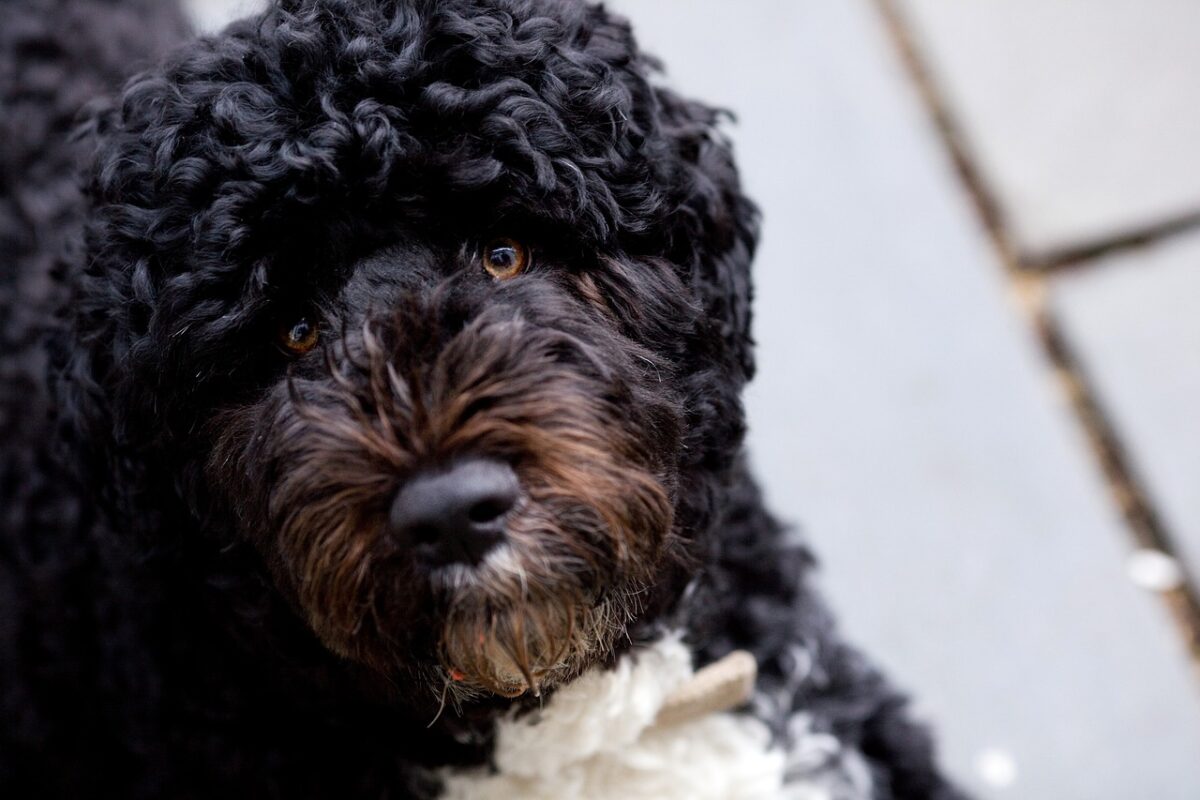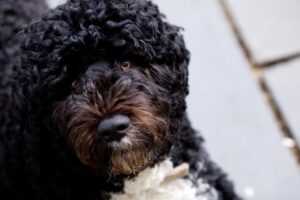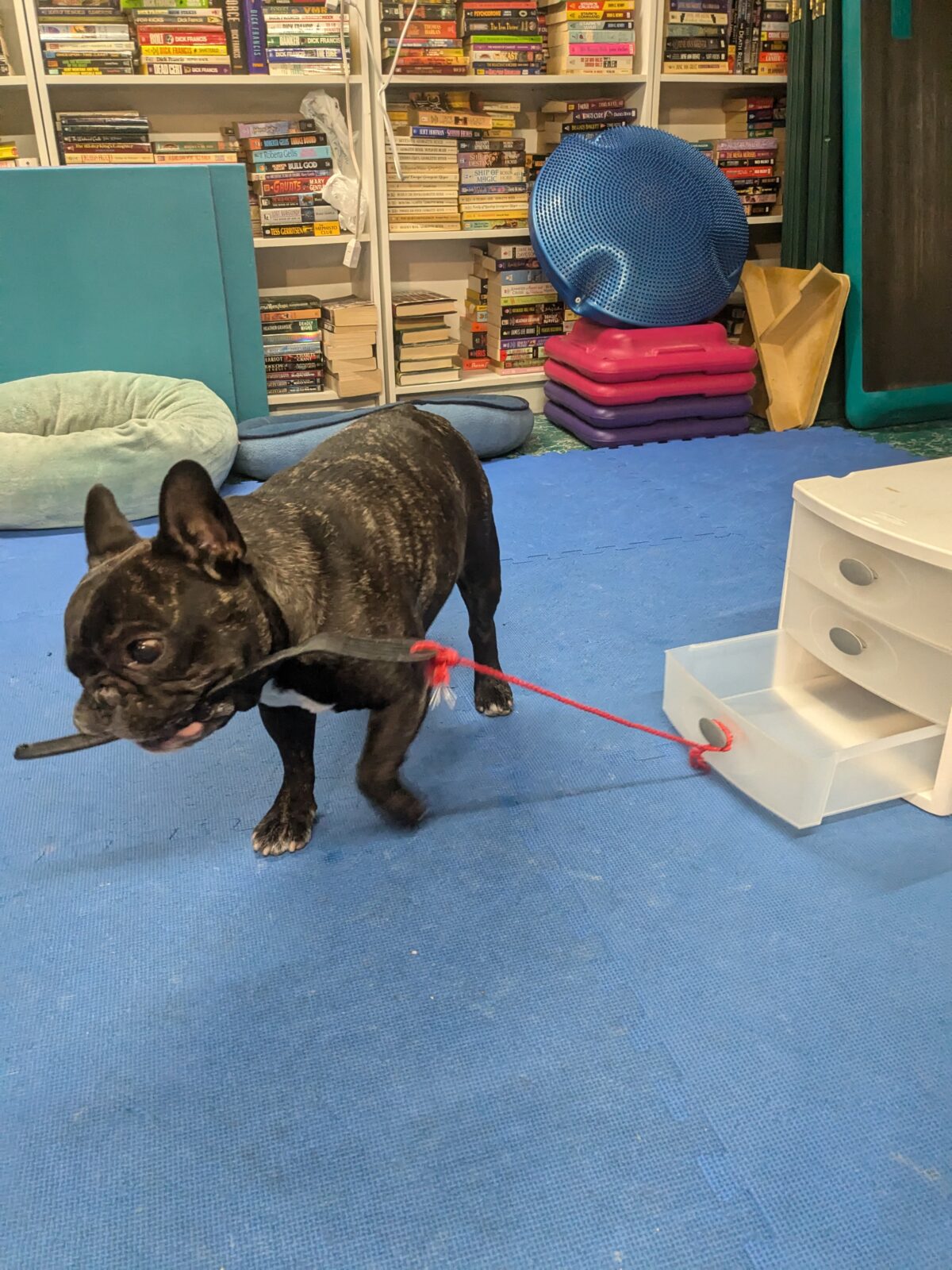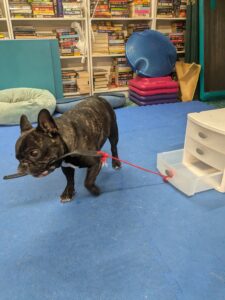What you call your dog’s “turning in circles” games depends on the level where it’s happening.
If your dog is lying on the floor, it’s “Roll Over!”
When your dog is standing with all four feet on the ground, it’s “Spin!”
If your dog’s up on their hind feet, it’s “Dance!” (mostly because pirouette is too hard to say and spell).
By the way, all three are great Kitchen Games – behaviors that don’t need a lot of room, not much time, and just a handful of treats.
Three games in one
All three variations start with the same action – turning your dog’s head one way or the other. With a treat held near the dog’s nose, just move it slowly to the side and back. Dogs get the idea better if your arm is over your dog’s back and you’re actually luring their motion from behind.
Keep the treat close to the dog’s nose, so move at the pace your dog sets. Even if your dog regularly spins in circles, like when they’re excited or chasing their tail, they won’t understand what you want right at first. Be patient.
If the dog’s head/neck only moves to about their shoulder, reward there and try for a bit further next time.
Paw-edness
This is a behavior that most dogs will do better going in one direction than the other. Like people, dogs have a dominant side.
Even if your dog is showing you they clearly prefer one side to the other, teach them turning in circles both ways. You want them to be equally balanced, not develop one-sided skills. Ideally you want to work all of their muscles for these fun fitness behaviors.
Standing Spin
Teaching “Spin” is probably the easiest of the three. Both you and your dog should be standing, with your dog facing either right or left and you standing perpendicular to your dog. Holding a treat in the hand farthest from the dog’s head, reach over their back to the side of their face away from you and get them to turn their face away from you, toward the treat. If your dog keeps moving around with your treat hand leading, turn them all the way around in a circle.
Most dogs don’t get it the first time and will seem confused. Your movement matters here. Try not to reach your arm too far out. Keep the treat close to your dog’s nose so they follow it around. This is almost literally leading them around by the nose.
Be patient. For most dogs the “Spin!” is pretty fast. They will prefer going one way over the other. Give the different directions (clockwise and counter-clockwise) separate names, like “Spin!” or “Turn!”
It gets confusing
Many people think the two words should be “Right!” And “Left!” Don’t be tempted. Who/s “Right!” do you mean? Yours or the dog’s? What if you’re facing each other? What if you’re next to each other? It just gets tortuous to figure out.
Floor work
If you’re teaching your dog “Roll Over,” it’s pretty much the same thing. The two of you are perpendicular to each other with you sitting and your dog lying down. Bring the hand furthest from the dog’s face over their shoulder, toward their nose. Get them to turn their heads to follow the treat hand.
Instead of going straight back, lure your dog’s motion up and toward you. Most dogs will naturally start rolling over.
Some dogs won’t ever roll over. Torque, Hope’s French Bulldog, is flat-out scared of turning turtle. It was Teddy’s, her previous Frenchie, best trick. Fran’s Boston Terriers whirl around any time, any where, all three levels. Since the behavior is basically just for fun, you shouldn’t push your dog if they hate it.
Dance
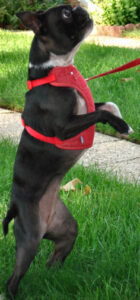
Start by having your dog stand up on their hind legs and reward at the apex. When the dog has been doing it for a while and is fairly stable on their back legs, move the treat in a circle for them to follow. Again, try to have them turn both ways. (Ceilidh – pronounced “Kay-lee” – loved to dance!)
Most dogs love these behaviors and will get them fairly quickly. You can stop luring it when you think your dog is getting the idea. Continue to reward after the lure isn’t necessary. Dogs may love doing it, but their good work should always be rewarded.
As you fade the lure, you’ll find yourself using the hand motions to trigger the behavior. Take note of how you’re moving so you can use it as a consistent hand signal. In no time at all, your dog will be turning in circles at the wave of your hand!
